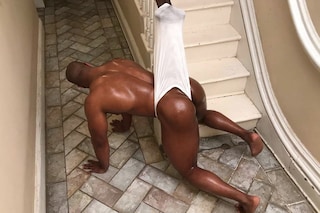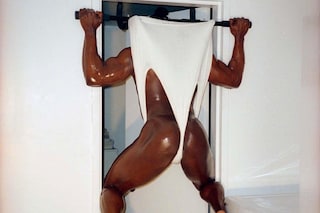Sapphic love, subcultures in suburban Europe and the steamy heat of a summer in Saigon: we take a trip through a selection of the season’s most exciting photo books
From “atomic” wedgies to teenage kicks, we’ve gathered a selection of photo books to pour over during long summer days. Get hot under the sheets with Tee A. Corinne’s tender shots of lesbian love, explore the streets and beaches of Vietnam in Tracy Dong’s moving love letter to her homeland, and step into the warm night with a compelling collection of images devoted to life after dark…
Pioneering lesbian artist and activist Tee A. Corinne rose to fame in the mid-70s for her still-celebrated publication, The Cunt Coloring Book. Even as a resource for sex education groups, she wanted her drawings of vulvas “to be lovely and informative, to give pleasure and affirmation” (an intention that coloured much of her subsequent output). Shortly after publishing, Corrine came out as a lesbian. Since “no one else was making the images I wanted to see”, she began to explore how she could use photography to “make sense out of this new life and culture into which I was moving”.
Her photographs – of passion, tenderness and touch between women – are published in a new book, alongside never-seen-before slides, contact sheets, and ephemera from her archive. Tee A. Corinne: A forest fire between us celebrates how Corinne brought together pleasure, play, intimacy, activism, and community in her work. As Corinne wrote in 1993, her images are an ode to “the radicalism of turning the lights on in secret, darkened places and making that enlightening into a public record.”
Published by MACK and available here.
Mutable, liminal, at times ineffable, nighttime contains many things – the stillness of sleep, the ecstasy of dance floors, dreamscapes, hauntings, hidden pleasures, and the promise of escape. In Night Fever: Film and Photography After Dark, edited by Shanay Jhaveri, Head of Visual Arts at the Barbican, the night is a canvas for creativity. Gathering a cohort of trailblazing image-makers (or “nightwalkers” as Jhaveri calls them), the publication explores cinematic and photographic representations of the small hours from the 60s to the present.
From Ming Smith’s spellbinding shots of Grace Jones performing at Studio 54, and Paz Errazuriz’s tender portraits of transgender sex workers in Chile in the 80s, to Myriam Boulos’ life-affirming depictions of desire after dusk in present-day Beirut, the images stress that “there is no single night”. Collectively, they affirm Djuna Barnes’ observation in her 1936 novel Nightwood: “The nights of one period are not the nights of another. Neither are the nights of one city the nights of another”.
Capturing not just the appearance of night but the swirl of emotions within it, this is the perfect book to get lost in when it’s too hot to sleep.
Published by Koenig Books and available from July, 2024.
Tension – both literal and erotic – is everywhere in Benjamin Fredrickson’s debut photo book, which documents the wedgie subculture from an insider perspective. An avid participant in the scene, the New York-based photographer shot this series over four years, working with his male subjects to “co-construct” images of extreme or “atomic” wedgies. Framed by Foucault’s belief that “kink” provides the opportunity for “inventing new possibilities of pleasure; [as] a kind of creation, a creative enterprise”, Fredrickson’s book asserts the artistic potential of kink and the communities that form around it.
Even as his sitters are dominated and objectified – “the body is used as a prop to make the wedgie shine,” Fredrickson states – reciprocity is crucial, as both sitter and photographer come together to fulfil their desires. While viewers are invited “to ogle the bodies and wedgies on display, and to become a third participant in the dynamic”, there is an element of denial at play too. As Frederickson reminds us: “The wedgie leaves something to the imagination.”
Published by Baron and available here.
Since leaving Buenos Aires for Germany in 2020, photographer Marina Mónaco has documented suburban youth cultures across Northern Europe. Her lens lingers on the often enchanting, often painful rites of passage who accompany coming of age – falling in love, heartbreak, friendship, artistry, idealism. The Berlin-based artist chronicled her travels in her first solo exhibition and photo book, I saw you in a song (2023). Its recent sequel, I saw you in a song: an anti-memoir (published last month), continues these themes, interweaving her documentary photographs with the diaries, letters, and mixtapes that inform her work.
Neue Welle, the main photo series featured in both books, traces her connection with the German new wave scene, and her muse Nils Keppel. This collision was formative in developing her signature style – stark black and white photography that calls up the dark romanticism of late 70s and 80s Berlin. As Mónaco told Dazed: “I think I discovered complementarity with the artists because they found in my photography the visual dimension of what they were trying to express through sound.”
Published by WeMakeItBerlin.
Since 2016, Paul Mpagi Sepuya’s Dark Room series has unsettled the formal and conceptual foundations of portrait photography, and teased the unstable meaning of “dark room”, a word that refers to the site of photographic processes and to spaces of sexual intimacy. Situating “queerness and blackness as starting points for looking at photography from the ground up”, Sepuya takes the studio as his subject. Through his intricate choreographies of bodies, mirrors and photographic equipment, he stages sensory melodramas between artist and subject, reflection and gaze, constantly pushing new visual possibilities.
Dark Room A-Z offers a deep dive into the dense web of methodologies, strategies, and co-creators behind this prolific body of work. It contains both new and previously published critical texts, sources of inspiration, and Sepuya’s own reflections on his thematic preoccupations.
Published by Aperture and available in August.
After Saigon fell to the North in April 1975, marking the end of the decades-long Vietnam War, members of the South Vietnamese military were imprisoned in “re-education” camps and forced to perform heavy labour to help rebuild the decimated country. Among them was Tracy Dong’s father. Subject to desperate living conditions even after his release, he finally managed to escape his homeland by boat in 1989 – along with his wife, Dong’s sister, and 135 other refugees.
Growing up in British Columbia, where her family settled, Dong knew little of her family history in Vietnam. It was only in 2021 that she sat down with her father and encouraged him to tell her the whole story. A year later, she returned to Vietnam for the first time since childhood, in an effort to reconnect with her extended family and reconcile with her homeland. From family photographs to street scenes and handwritten diary entries, images from her journey are published in her monograph, Tell Me About Saigon.
“[It’s] at first a documentation of a return back to a homeland, but with time it becomes a claim, a remark and an ongoing question of personal evolution in response to forgotten ancestors and former selves,” she explains. “In order to heal you need to go to the source of the wound, and to move forward you must imagine and reconnect.”
Published by Kris Greaves Projects (KGP Monolith) and available here.
Photographer Robert F. George is driven by the desire “to capture unique pieces of time”. In his latest publication, Harmony Rats, that slice of time is Brattleboro, Vermont at the turn of the millennium. Its pages are filled with photographs of teenagers loitering along Flat Street and in the Harmony Parking Lot. Located behind Brattleboro’s red-brick downtown, the parking lot has been a popular hangout spot for young people since the 60s, and has been eulogised in punk songs and poems.
George’s images are striking in their simplicity. Explaining his preference for black and white, the photographer says: “Colour gives us a certain reality… In removing one kind of reality, [black and white] gives us another: a purity, a sense of history, drama and gravity.” Despite being rooted in a specific time and place, these Y2k images touch upon the universal gravity of teenage years – days in which absolutely nothing and absolutely everything can happen at once.
Published by Pine Island Press and available from Death Ray Distro here.
From his polaroids of 90s skate culture in Brooklyn to his short film The Park (2017/18), an uninterrupted capture of an unfenced basketball court in Fort Greene, legendary New York photographer Ari Maracopoulos is renowned for documenting the sports communities that exist within the whirl of city life.
His new book, Sumo Judo, exhibits that same appreciation for movement, technical skill, and camaraderie among young athletes, both on and off the mat. It contains portraits of Sumo wrestlers photographed at the Kokonoe stable in Tokyo in 2013, as well as portraits of Judo students at the Kyoto University Gymnasium in 2023. These images are all about energy exchange – between competitors, and between photographer and subject. Marcopoulos approaches his participants with grace and ease, and they welcome the camera’s gaze in turn.
Co-published by Dashwood Books and Roma Publications, and available here.








